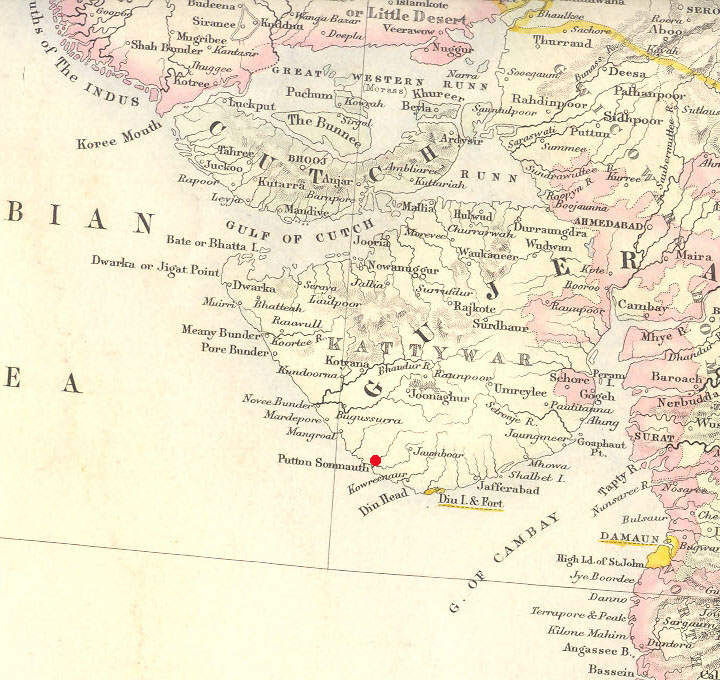

The location of Somnath, site of Mahmud Ghaznavi's last and most notorious temple raid, c.1025/6; *the whole map (1859)*
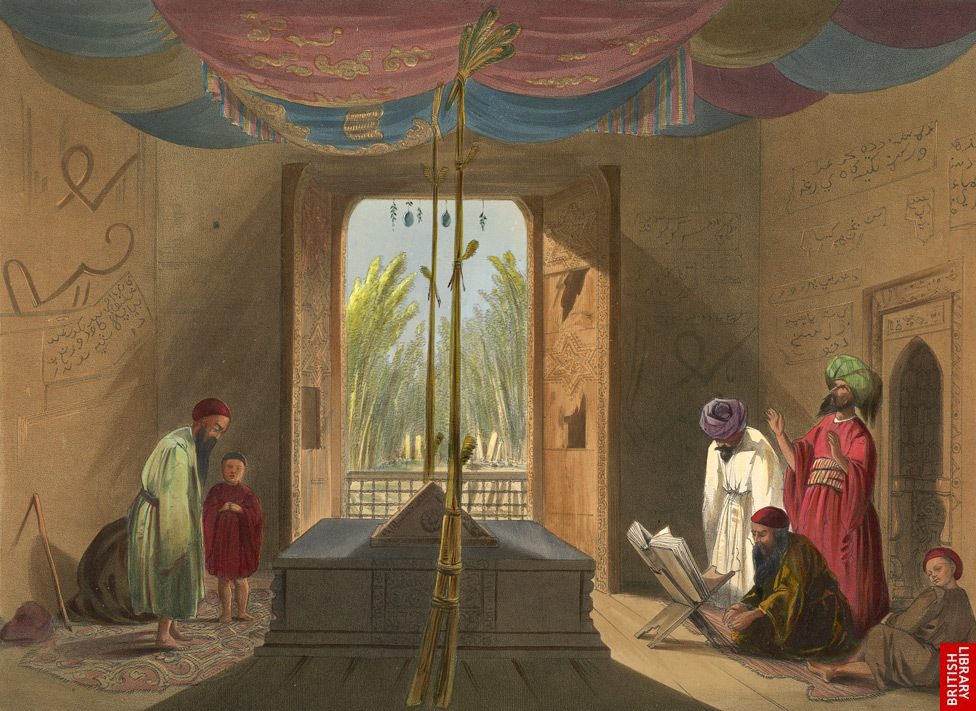
*"Mosque and Tomb of the Emperor Soolta Mahmood of Ghuznee," a painting by James Rattray, made during the First Afghan War (1839-42), published in 1848* (BL); take a look at those door panels

"The Supposed Gates of Somnauth, in the Arsenal of the Fort at Agra," from the Illustrated London News, 1872; *a very large scan of this engraving*
Source: ebay, Oct. 2006
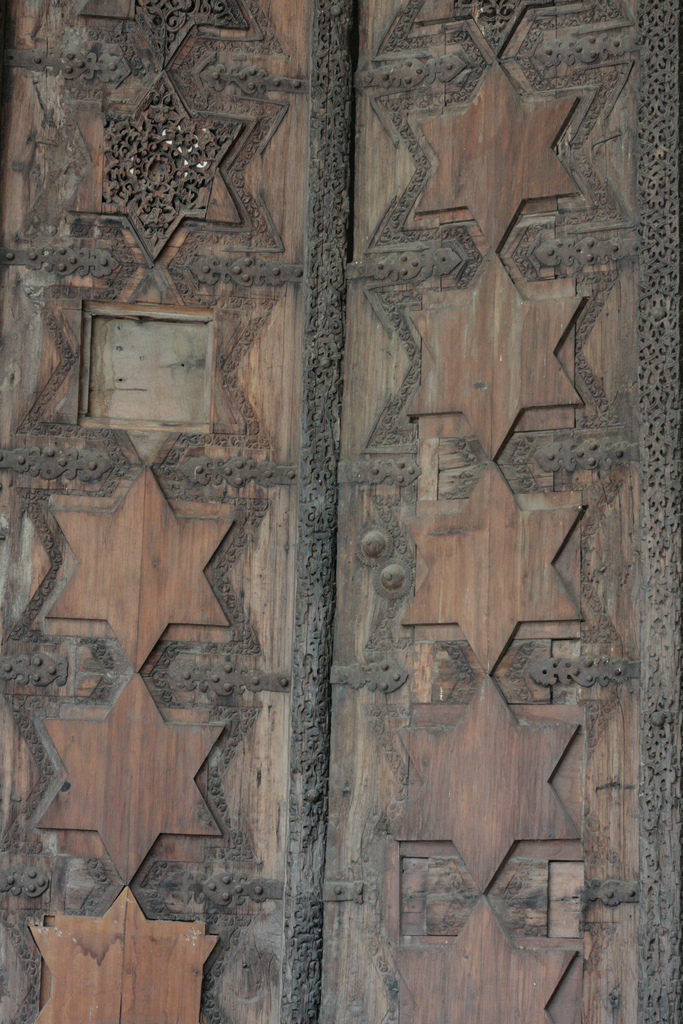
The alleged "Gates of Somnath" brought from Ghazni by Lord Ellenborough in 1842 still remain on view, in a dilapidated condition, in the Agra Fort
Source:
http://www.flickr.com/photo_zoom.gne?id=1317760273&size=o
(downloaded Jan. 2008)

The modern inscription in the Agra Fort that appears near the alleged "Gates of Somnath"
Source: http://www.flickr.com/photos/12620458@N05/1318655546/
(downloaded Jan. 2008)
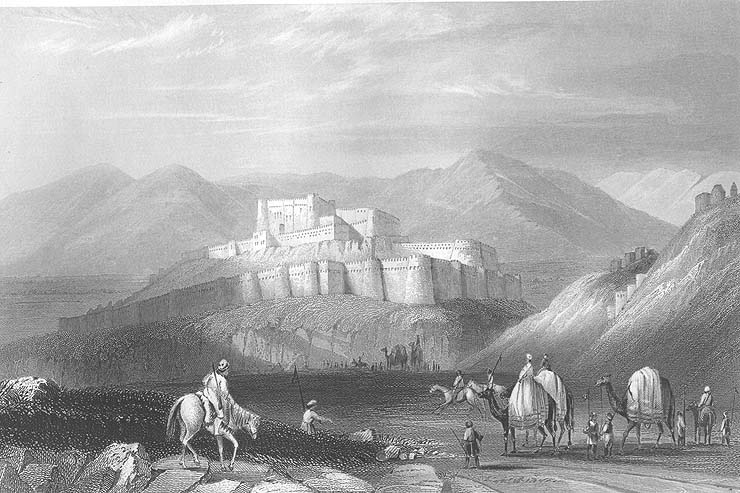
"Ghuznee, or Ghazna," a steel engraving by A. H. Payne, published c. early 1850's
Source: ebay, Feb. 2005
An excerpt from the text that accompanied the engraving in the original source [emphases provided by FWP, as an example of contemporary British claims about Mahmud Ghaznavi]:
"....In the year 1001 he [=Mahmud] began his incursions into Hindustan, and in a short time became master of all Kashmir and the Punjaub. But he was stopped in his course of victory by an irruption of his father-in-law into Khorassan. After having expelled this domestic enemy, and defeated him in battle near Baikh, in the year 1007, principally by means of the elephants which he had brought from India, he marched against the Ghebers, whom he conquered, but rendered irreconcilable enemies of his dynasty by his cruelty. He continued his conquests as far as the Ganges, murdering all the men who would not become converts to Mahommedanism, and carrying off the women and children as slaves. With the immense spoils which he brought back with him from India he founded in Ghuznee a magnificent mosque, with a school and library; for he was a friend and patron of learning and the sciences.In the year 1025 he undertook his most celebrated expedition to India, and conquered Guzerat; taking by storm and destroying the town of Somnath with its celebrated temple, which was one of the greatest and most magnificent holy places of the Hindoos, and possessed of immense wealth; the roof was supported by fifty-six golden pillars, ornamented with precious stones and pearls. Several thousand gold and silver statues stood round the gigantic idol, Sirva, in whose interior the priests had concealed an immense number of precious stones. Mahmood broke the idol with his own hand. Four years afterwards he marched against the King of Persia, took him prisoner, and made himself master of the northern provinces of his kingdom without opposition. He died in the following year."
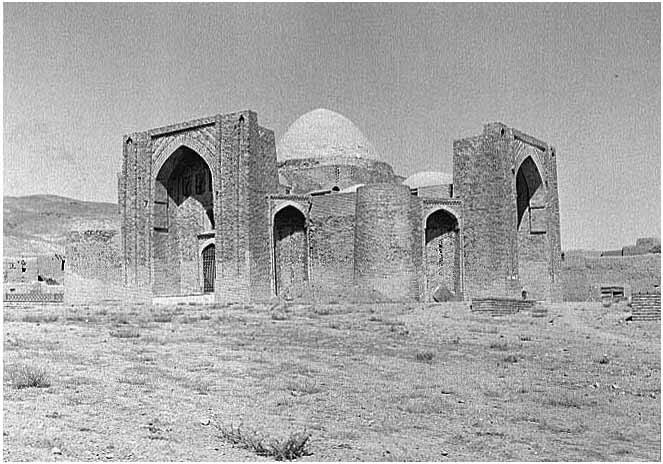
Mahmud's now-gateless tomb in Ghazni; a photo from 1969
Source:
http://www.thewalt.de/afghanistan/ghazni_etc/pages/d8_69_07.htm
(downloaded Nov. 2004)
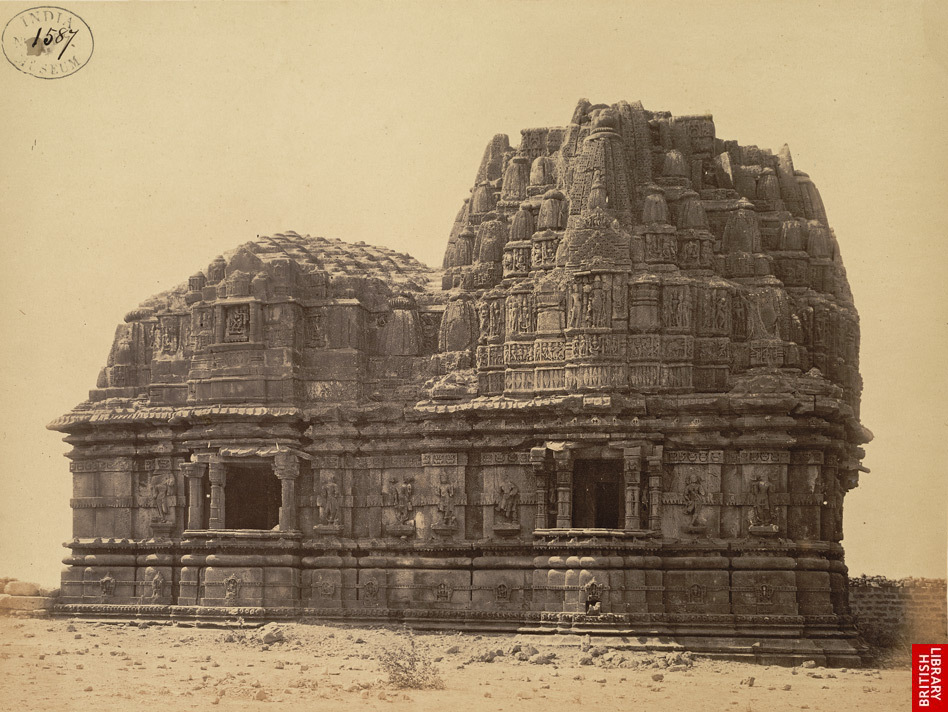
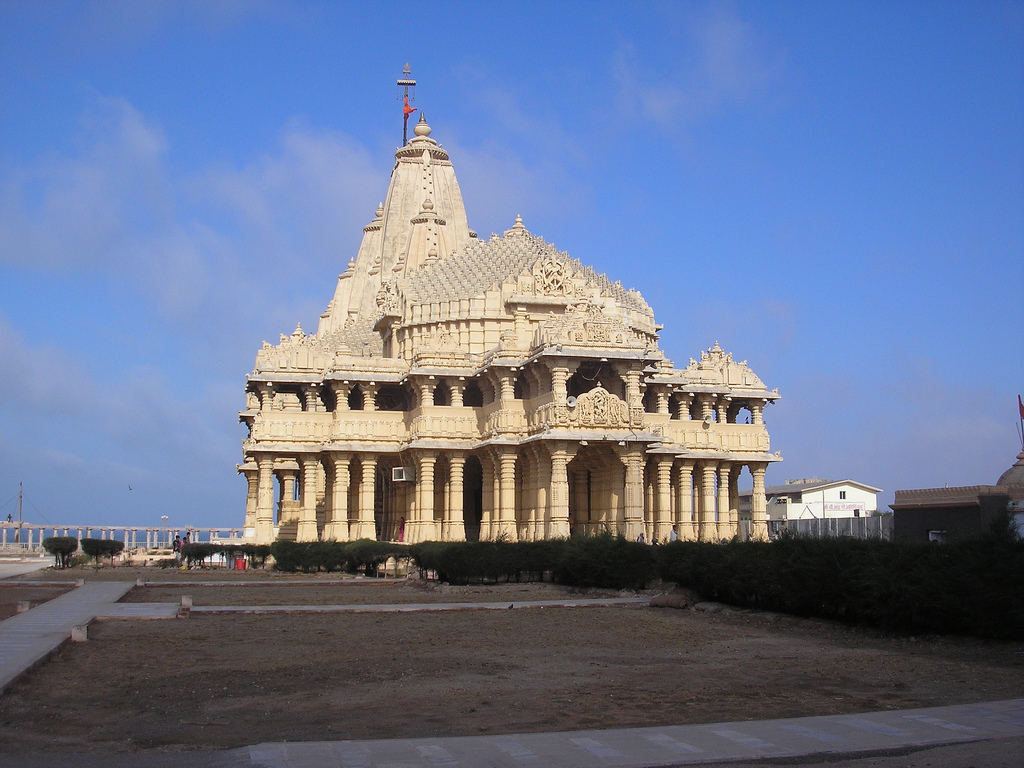
The modern Somnath temple in Veraval, Gujarat, built after Independence
Source: http://www.flickr.com/photos/pvsnraju/419992730/
(downloaded June 2007)
Source: http://www.flickr.com/photos/upendra/183410687/
(downloaded June 2007)
*A night view of the modern temple*
Source:
http://www.indiamike.com/photopost/showphoto.php/photo/21224/limit/recent
(downloaded June 2008)
== Indian Routes index == Indian Routes sitemap == Glossary == FWP's main page ==